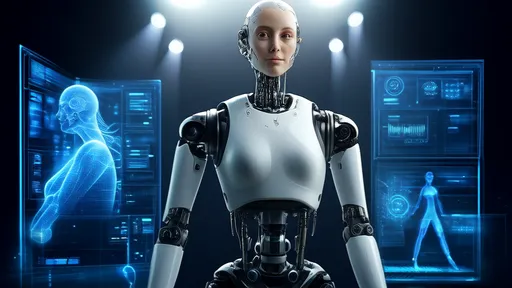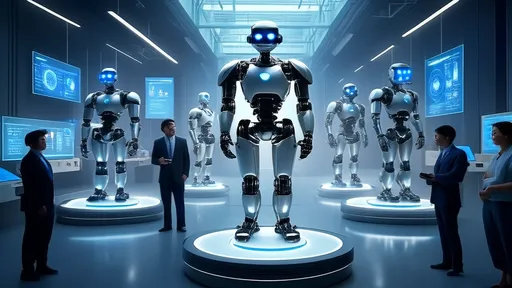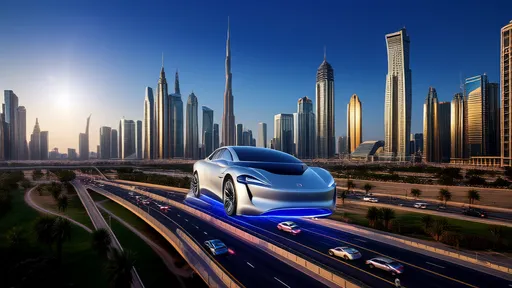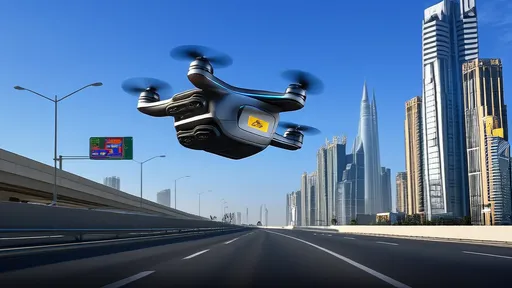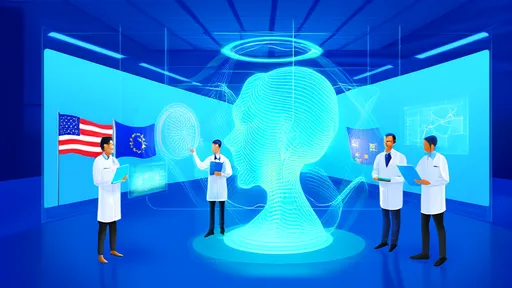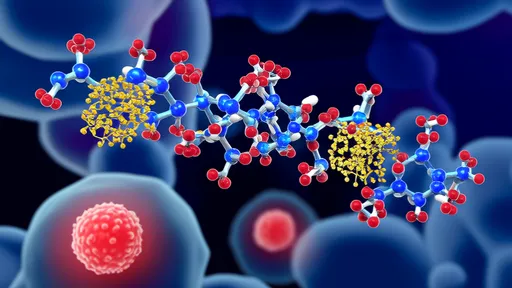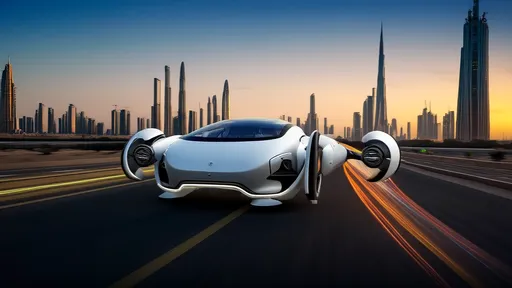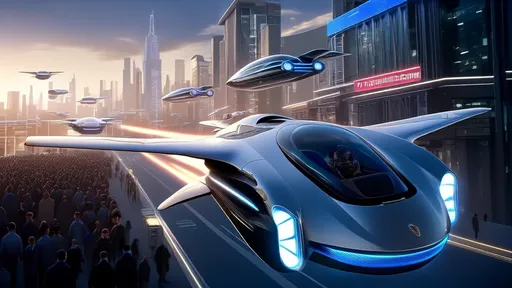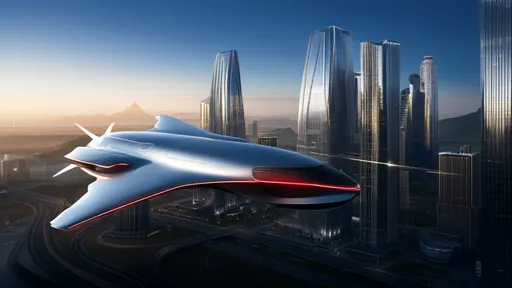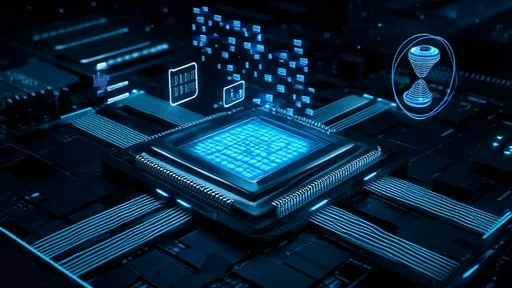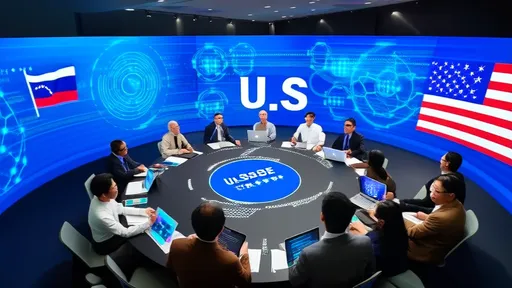The recent inclusion of humanoid robots in the 2025 Top Ten Global Engineering Achievements marks a watershed moment in technological history. This recognition transcends mere academic acknowledgment; it represents a collective global validation of decades of research, development, and iterative innovation in robotics. For years, humanoid robots existed primarily in the realms of science fiction and laboratory prototypes, often viewed as fascinating but distant curiosities. Their elevation to a top global engineering feat signals a profound shift—a transition from conceptual marvels to tangible agents of change poised to reshape our societal and industrial landscapes.
The journey to this milestone has been anything but linear. Early humanoid robots were cumbersome, expensive, and limited in their capabilities, often requiring controlled environments and constant human supervision. They struggled with fundamental tasks like navigating uneven terrain or manipulating delicate objects. However, the convergence of several critical technologies has catalyzed a rapid acceleration. Breakthroughs in artificial intelligence, particularly in machine learning and computer vision, have endowed these machines with unprecedented perceptual and cognitive abilities. Simultaneously, advancements in materials science have led to lighter, stronger, and more flexible actuators and frames, while sophisticated sensor suites provide a rich, real-time understanding of the environment. This synergy has transformed humanoid robots from rigid, pre-programmed machines into adaptive, learning systems.
The core of this achievement lies in the remarkable sophistication of bipedal locomotion and dynamic balance. Engineering a machine to walk, run, and recover from stumbles with the fluidity and robustness of a human is an immense challenge that has consumed engineers for generations. The 2025 cohort of humanoid robots demonstrates a mastery over complex physics and real-time control systems that was unimaginable just a decade ago. They can traverse stairs, step over obstacles, and maintain stability on shifting or slippery surfaces. This capability is not merely about mimicking human movement; it is about creating a form factor that is inherently compatible with a world built by and for humans. A robot on wheels is limited to flat planes, but a humanoid robot can theoretically operate anywhere a person can, from factory floors and construction sites to homes and disaster zones.
Another pivotal area of progress is in the realm of manipulation. The human hand is a marvel of biological engineering, and replicating its dexterity has been a holy grail for roboticists. Recent models feature highly advanced multi-fingered hands with tactile sensors, allowing for fine motor skills that enable them to use human tools, assemble complex components, and perform tasks requiring a delicate touch. This dexterity, combined with improved arm strength and range of motion, unlocks a vast array of potential applications. From handling fragile items in a logistics warehouse to assisting a surgeon in an operating theater, the ability to interact with the physical world in a nuanced way is a game-changer.
Perhaps the most transformative aspect of modern humanoid robots is their cognitive architecture. Powered by large language models and advanced AI, these robots are evolving beyond simple command-and-response machines. They can understand and process natural language, allowing for intuitive human-robot interaction. A worker can verbally instruct a robot to "hand me the wrench on the bench behind you" or "help me lift this panel," and the robot can comprehend the context, identify the objects, and execute the task. Furthermore, they possess a degree of situational awareness and problem-solving skills. They can learn from demonstration, adapt their actions to unforeseen circumstances, and even collaborate with other robots and humans in a coordinated manner. This shift from programmed automation to collaborative intelligence is what truly sets the current generation apart.
The implications of this engineering triumph are vast and multifaceted, stretching across nearly every sector of the global economy. In manufacturing and logistics, humanoid robots are being deployed for tasks that are too dangerous, repetitive, or ergonomically unsound for human workers. They can work alongside people on assembly lines, perform quality inspections, and manage inventory in sprawling warehouses, operating 24/7 without fatigue. The construction industry stands to benefit enormously, with robots capable of performing heavy lifting, welding, and bricklaying in hazardous environments, thereby improving safety and efficiency.
Beyond heavy industry, the service and healthcare sectors are on the cusp of a revolution. In healthcare, humanoid robots can serve as companions and assistants for the elderly, helping with mobility, medication reminders, and providing social interaction to combat loneliness. They can assist nurses with patient lifting and monitoring, reducing physical strain on healthcare professionals. In public spaces, they could function as guides, information kiosks, and first responders in emergencies. The potential for their use in search and rescue operations following natural disasters is particularly compelling, as they could navigate through rubble and debris too unstable for human responders.
However, this rapid ascent is not without its significant challenges and ethical considerations. The widespread adoption of humanoid robots raises profound questions about the future of work and the potential for mass displacement of human labor. While they may create new jobs in robot maintenance, programming, and supervision, the net impact on employment patterns is a subject of intense debate and necessitates proactive policy and re-skilling initiatives. Furthermore, the integration of highly capable, autonomous machines into daily life demands robust ethical frameworks and safety protocols. Issues of data privacy, decision-making authority in critical situations, and ensuring that these powerful systems are not misused must be addressed with urgency and foresight by policymakers, engineers, and ethicists alike.
Economically, the rise of humanoid robotics is catalyzing the formation of a massive new global industry. Tech giants, automotive manufacturers, and dedicated startups are in a fierce race to develop the dominant platform, investing billions in research and development. This competition is driving innovation at a breakneck pace but also raises concerns about market consolidation and the potential for a technological divide between nations that lead in robotics and those that do not. The geopolitical dimension cannot be ignored, as leadership in this field is increasingly seen as a marker of a nation's technological and economic prowess in the 21st century.
Looking ahead, the recognition of humanoid robots as a top global engineering achievement is not an endpoint, but a starting gun. The next decade will likely focus on refining these technologies to enhance reliability, reduce costs, and improve energy efficiency. We can anticipate further breakthroughs in human-robot collaboration, where robots become true partners, anticipating needs and working seamlessly within human teams. The development of more advanced sensory feedback, perhaps even synthetic senses beyond human capabilities, will open up entirely new applications. The boundary between human and machine may continue to blur, with exoskeletons and prosthetics powered by the same underlying technology restoring and even enhancing human mobility.
In conclusion, the inclusion of humanoid robots in the 2025 Top Ten Global Engineering Achievements is a testament to one of the most ambitious and consequential engineering endeavors of our time. It marks the moment when these machines stepped out of the laboratory and into the forefront of global technological progress. They represent a powerful fusion of mechanics, intelligence, and design, holding the promise to address some of society's most pressing challenges, from labor shortages in aging populations to performing dangerous tasks. Yet, as we stand on the brink of this new era, it is imperative that we guide its development with wisdom, ensuring that the age of humanoid robots enhances human potential and well-being, creating a future that is not only more efficient but also more equitable and humane.
The once-fantastical vision of humanoid robots, long confined to the pages of science fiction and the silver screen, is steadily materializing into a tangible engineering reality. This evolution is not the result of a single, monumental breakthrough but rather a profound and intricate symphony of advancements across a multitude of scientific and engineering disciplines. The quest to create machines that not only look but also move, perceive, and interact with the fluidity and adaptability of humans represents one of the most ambitious technological endeavors of our time. It is a grand convergence, where progress in artificial intelligence, materials science, mechanical engineering, and cognitive science coalesces to breathe life into metal and silicon, pushing the boundaries of biomimicry to unprecedented heights.
The recent inclusion of humanoid robots in the 2025 Top Ten Global Engineering Achievements marks a watershed moment in technological history. This recognition transcends mere academic acknowledgment; it represents a collective global validation of decades of research, development, and iterative innovation in robotics. For years, humanoid robots existed primarily in the realms of science fiction and laboratory prototypes, often viewed as fascinating but distant curiosities. Their elevation to a top global engineering feat signals a profound shift—a transition from conceptual marvels to tangible agents of change poised to reshape our societal and industrial landscapes.
In a landmark recognition of human engineering prowess, China's full-ocean-depth manned submersible has been selected among the 2025 Top Ten Global Engineering Achievements, standing shoulder-to-shoulder with revolutionary projects like quantum computing infrastructure and Mars colonization prototypes. This prestigious listing, announced by the International Engineering Consortium earlier this morning, represents more than just technological acknowledgment—it signifies humanity's renewed commitment to conquering Earth's final frontier.
In the heart of Dubai's morning rush hour, the familiar gridlock of Sheikh Zayed Road stretches for kilometers below, but above the shimmering asphalt, a new dimension of transportation is quietly rewriting the rules of urban mobility. As first reported by The Times of India, the city's ambitious flying car initiative has transitioned from futuristic concept to operational reality, with commuters now gliding between skyscrapers in electric vertical take-off and landing vehicles. This isn't a scene from a science fiction film but the new daily reality for a growing number of Dubai residents who have traded their terrestrial commutes for the freedom of three-dimensional travel.
The desert skies of the United Arab Emirates, long dominated by the sleek silhouettes of commercial airliners and private jets, are poised to welcome a new kind of vessel. In a landmark decision that signals a significant leap from science fiction to tangible reality, a specific model of flying car has been granted a special certificate of flight from the UAE's civil aviation authority. This is not merely a provisional test permit for a closed course; it is a crucial regulatory nod that brings the vision of urban air mobility one giant step closer to the daily lives of the region's residents.
In a move signaling a new era of technological collaboration, Southeast Asian nations and the United States are forging a groundbreaking partnership in artificial intelligence development. This strategic alliance emerges at a critical juncture when global AI governance remains fragmented and the technology's potential to reshape economies and societies becomes increasingly apparent. The collaboration represents more than just technical cooperation—it embodies a shared vision for responsible innovation that respects cultural diversity while addressing common challenges.
The Euclid Space Telescope, humanity's newest and most ambitious eye on the cosmos, has begun its monumental mission to pierce the profound darkness that envelops our universe. Launched into the silence beyond our atmosphere, its purpose is not merely to capture stunning celestial portraits but to map the invisible architecture of reality itself. For decades, astronomers have known that the cosmos we see—the glittering tapestry of stars, galaxies, and nebulae—comprises a mere five percent of the total content of the universe. The remaining ninety-five percent is a profound mystery, a dual enigma composed of dark matter and dark energy. These are the phantoms of physics, entities that do not emit, absorb, or reflect light, yet whose gravitational influence dictates the fate of everything we hold visible. Euclid is our most sophisticated attempt to date to bring these shadows into the light, to understand the hidden forces that have shaped the universe's past and will determine its ultimate destiny.
Beijing's National Stadium, once the iconic centerpiece of the 2008 Summer Olympics, echoed with a different kind of applause this week. The thunderous cheers were not for human athletes pushing the limits of physical endurance, but for their mechanical counterparts—humanoid robots competing in the inaugural World Humanoid Robot Sports Games. The air, thick with the whirring of servos and the collective anticipation of engineers and spectators, marked a pivotal moment in the history of robotics and international sport.
The landscape of oncology treatment is undergoing a profound transformation, driven by the emergence of third-generation antibody-drug conjugates (ADCs). These sophisticated therapeutic agents represent a significant leap forward in the quest for precision medicine, offering new hope for patients battling various forms of cancer. Unlike conventional chemotherapy that attacks both healthy and cancerous cells indiscriminately, these advanced biologics deliver potent cytotoxic agents directly to tumor cells, minimizing damage to healthy tissues and reducing debilitating side effects.
In the relentless battle against cancer, a revolutionary class of therapeutics has emerged, earning the evocative moniker of "precision missiles" for their ability to deliver potent cytotoxic agents directly to malignant cells while sparing healthy tissue. These are Antibody-Drug Conjugates, or ADCs, and they represent a sophisticated fusion of biologic targeting and potent chemotherapy, a paradigm shift in oncology that is redefining treatment expectations for a growing number of cancers.
The desert skies above Dubai witnessed a historic moment last week as the sleek silhouette of a flying car cut through the cerulean blue, marking what many industry experts are calling the dawn of a new era in personal transportation. The demonstration, orchestrated by the pioneering aviation firm AeroMobil Emirates, was not merely a test flight; it was a powerful statement of intent, a tangible promise of a future once confined to the pages of science fiction.
In a remarkable demonstration of growing consumer confidence in aerial mobility solutions, global pre-orders for flying cars have surged past the 7,000-unit milestone. This significant threshold, reached far earlier than most industry analysts had projected, signals a fundamental shift in public perception about the viability of personal air transportation. What was once confined to science fiction novels and futuristic concept videos is rapidly transforming into a tangible consumer product category with demonstrated market demand.
In the shimmering heat of the Arabian Gulf, a new silhouette is beginning to pierce the horizon. It is not the familiar form of a commercial airliner nor the sleek profile of a private jet, but something altogether more futuristic—a flying car. This vision, once confined to the realms of science fiction, is fast becoming a tangible reality, and it is Chinese innovation that is poised to turn the skies above Dubai, Abu Dhabi, and Riyadh into a dazzling new theater of urban mobility.
The relentless march of artificial intelligence demands computational power on a scale previously unimaginable. At the heart of this revolution lies the Graphics Processing Unit, or GPU, which has evolved from a specialized graphics rendering component into the primary engine for AI workloads. The latest generation of GPU architectures represents a paradigm shift, not merely an incremental improvement. These new designs are fundamentally re-engineering the silicon to tackle the unique and colossal demands of modern AI, with a core focus on achieving unprecedented levels of computational density and efficiency through hyper-scale integration.
The ASEAN-US AI Cooperation Forum concluded its third annual session this week with a renewed commitment to bridging the digital divide through focused capacity building and infrastructure development. Held against the backdrop of rapid technological advancement, the forum brought together policymakers, industry leaders, and academics to chart a collaborative path forward, recognizing that the benefits of artificial intelligence must be distributed equitably to ensure regional stability and prosperity.
